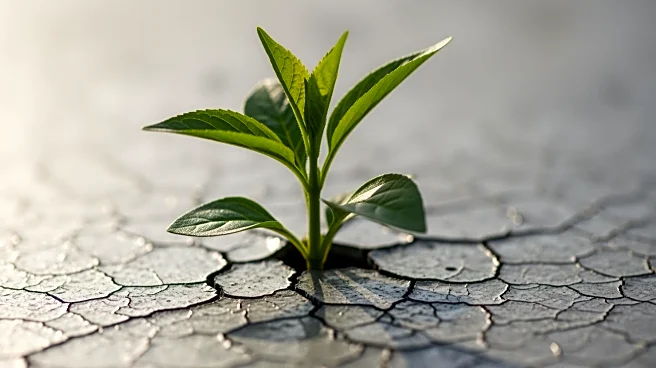What's Happening?
Zinc (Zn) is a prevalent heavy metal in the Earth's crust, essential for biological growth but also toxic at high levels. The metal is widely used in industries, leading to environmental pollution through
anthropogenic activities. Zinc toxicity can affect human health, causing symptoms like fever and nausea, and disrupts soil and aquatic microbial diversity. However, certain bacterial species have shown promise in bioremediation, using mechanisms like efflux and uptake to remove excess zinc from contaminated environments. This review highlights the dual nature of zinc as both essential and toxic, and the potential of bacteria in mitigating its environmental impact.
Why It's Important?
Understanding zinc's dual role is crucial for addressing environmental pollution and public health concerns. The metal's widespread industrial use necessitates effective remediation strategies to prevent ecological damage and health risks. Bacterial bioremediation offers a sustainable solution, leveraging natural processes to detoxify environments. This approach can preserve soil and water quality, supporting biodiversity and reducing human exposure to toxic levels of zinc. The insights from this review can inform policy decisions and promote the development of bioremediation technologies, benefiting industries, communities, and ecosystems.
What's Next?
Further research into bacterial resistance mechanisms and bioremediation strategies is needed to optimize zinc removal from polluted sites. This includes exploring genetic adaptations in bacteria and scaling laboratory findings to industrial applications. Collaboration between scientists, policymakers, and industries can drive innovation in bioremediation technologies, ensuring effective and sustainable solutions to zinc pollution. Monitoring and regulation of zinc emissions will also be critical in mitigating its environmental impact and protecting public health.











